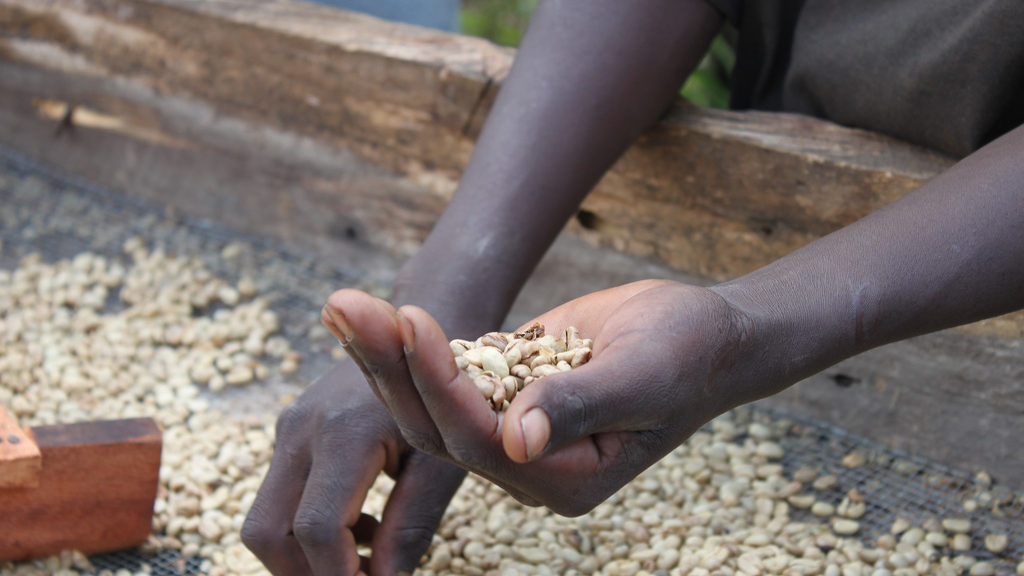
11 Mar Caffeine Levels in Coffee: Busting a Myth
Delivered to the baristas at my local Starbucks after becoming perpetually annoyed with the lack of education regarding the subject.
Myth: Lighter Roasted Coffee Has More Caffeine
In reality, caffeine levels remain consistent regardless of roast level. Let’s take a deeper look.
To Roast a Bean
Green coffee is an inherently dense, heavy substance. It’s very similar to the pit of a cherry—hard and completely inedible. As coffee is roasted, countless chemical reactions are occurring within the bean. Similar to baking, the first thing that happens to a bean when it is roasted is the evaporation of moisture. During the first few minutes of a roast, whatever water content may have existed within the bean is ‘cooked out’. This obviously reduces the weight or, more accurately, the ‘density’ of the bean.
As the roast progresses, further chemical reactions take place. Often times the heat inside a roasting drum will reach +500 degrees fahrenheit, and at a certain point the first sets of carbon bonds begin to break within the bean. This is called the ‘First Crack’, and is recognizable by a light, audible ‘cracking’ sound, not dissimilar to the popping of popcorn. This is also the moment the coffee first becomes ‘edible’. It might not be ready to drink just yet, but due to the breaking down of carbon structures, the bean is able to be digested by the stomach. ‘Light roast’ or ‘Blonde’ coffees are generally considered complete near the end of the first crack, (which is generally several minutes into the roast and about a minute after the start of first crack.) The roast will complete and the beans will cool, ready to be ground and brewed into a beverage.
If a darker roast is desired, the roaster will continue to apply heat to the coffee beans. As the interior temperature of the bean continues to increase, still more chemical reactions take place. A little more than a minute after first crack, a second crack will begin. The sound of this crack is more subtle and ‘tinny’ than the first crack, but is still audible. The change in sound is due to different carbon structures being broken down. The roaster may stop the roast at any moment depending on his desired roast profile. Note that the ‘oils’ generally found on darker coffees are the product of these ‘second crack’ chemical reactions that take place. As bonds are broken, the oils are released.
A key point to understand is that during every moment of the roast the coffee bean becomes less dense and greater in size (a correlated effect.) The decreased density may be obvious—as a substance is ‘cooked’, molecules leave the bean by way of steam and smoke. The reason for the increased size can be related to the popping of popcorn—as the tight chemical bonds are broken (the same chemical bonds which make green coffee inedible), the bean becomes ‘looser’, which allows the chemical byproducts to vacate the bean (steam and smoke.)
The drastic change in size and density cannot be underestimated. During the roasting process, a coffee bean’s weight will decrease nearly 20% and it’s size will increase nearly 20%.
The Caffeine Correlation
Now, caffeine. Caffeine, as a chemical, remains quite stable throughout the roasting process. It is not ‘cooked out’ of the bean, and generally speaking, the amount of coffee within a bean at the beginning of a roast is the same as at the end.
So, why do some folks claim that lighter coffees have more caffeine? To answer this question we have to take a look at the way coffee is measured. Because we’ve been discussing bean density, weight is the name of the game.
If 45 grams of light-roasted coffee is measured out and set in a cup next to 45 grams of dark-roasted coffee, there will appear to be much more dark coffee by volume. This is because the dark coffee is less dense (remember how much longer it was roasted?) You may have noticed that a packaged pound of light coffee seems much smaller than a pound of dark coffee—same weight, different density. A 45 gram measurement of light coffee will yield the same amount of caffeine as a similarly weighed dark coffee.
What if we don’t measure by weight, but instead we measure by volume? Well, here we have found the fatal flaw. As we have seen above, one ‘scoop’ of light coffee will be significantly more dense than a scoop of dark coffee. If two cups of coffee are made, one with a scoop of light beans and the other with a scoop of dark, the cup made with one scoop of light coffee will contain significantly greater amounts of whatever contents are in that coffee bean, to include caffeine.
As you can see, measuring coffee volumetrically does not take into account the varying densities of different coffees and roast profiles, and will not only yield inconsistent caffeine amounts but will also yield inconsistent strengths of brewed coffee.
The bottom line: caffeine levels do not largely differ between different coffee roast profiles (i.e. dark, light, french roast, etc.) Rather, it is a flawed method of brewing coffee that yields varying caffeine levels; namely, the measuring of coffee by volume/size rather than by weight.

No Comments